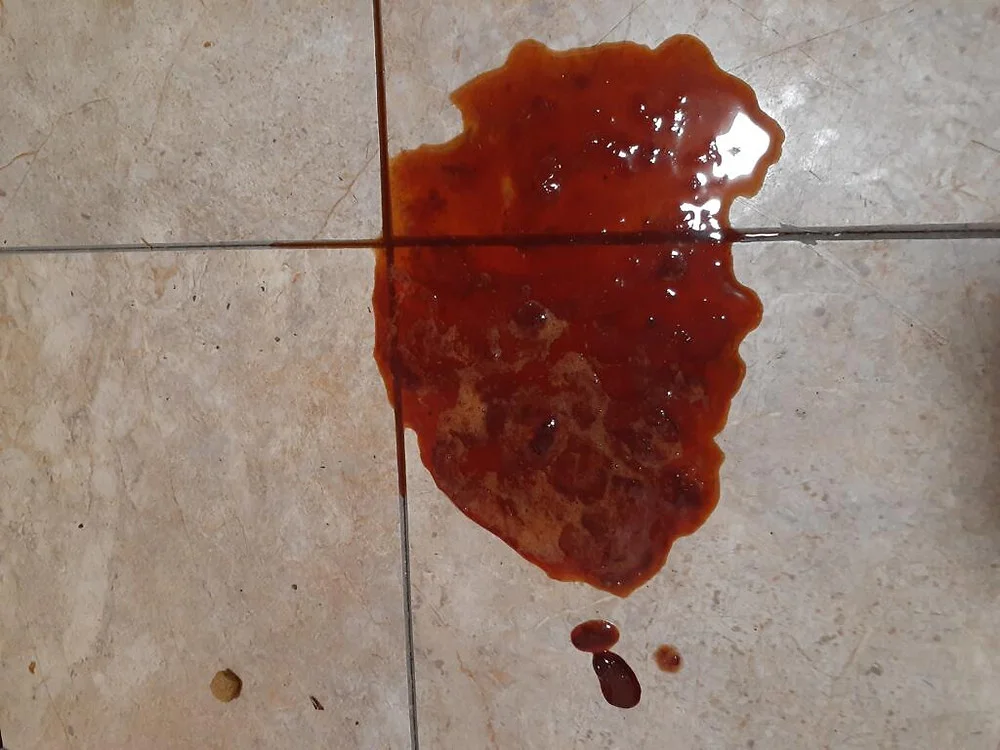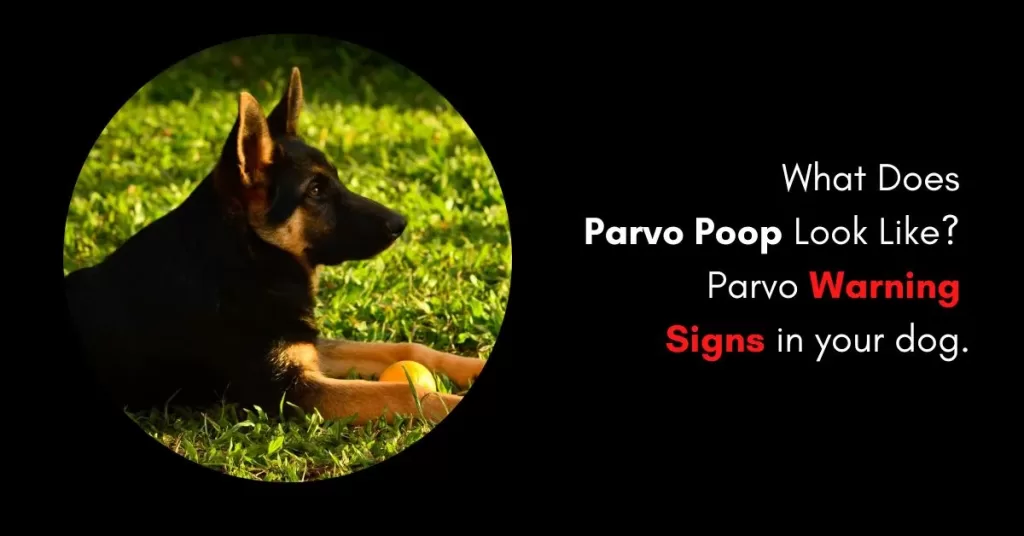What Does Parvo Poop Look Like? Dogs can be very susceptible to the parvovirus, a highly contagious and deadly virus that primarily affects puppies and young dogs. If your dog is showing any of the symptoms, it is important to take them to a veterinarian for an examination: diarrhea, vomiting, fever, muscle weakness, and loss of appetite.
What Is Parvo Virus?
Parvo is a short form of canine parvovirus, a highly contagious gastrointestinal disease that attacks the cells of the intestinal lining, preventing the dog from absorbing vital nutrients.
It can affect dogs at any age, but puppies are most vulnerable to the disease, especially those as young as 6 weeks, as their immune system is weakened.
It could take up to 7 days for the infected dog to show symptoms. If left untreated after the onset of symptoms, even for a day or two, it can be fatal.
Also Read: Best Natural Flea Treatment for Dogs
Unfortunately, most dogs infected with dog parvovirus may die because young age dogs and puppies will have a low resistance to it.
How parvovirus will spread and how to prevent it?
Canine parvovirus is a highly contagious virus that is spread from dog to dog through direct contact or contaminated surfaces. The virus can survive for long periods of time outside of the host, making extended contact unnecessary for transmission.
Dogs that are unvaccinated or have not built up immunity are at the highest risk for contracting the virus. Symptoms include diarrhea, vomiting, and loss of appetite.
Humans who handle Parvo infected feces or vomit can also transmit it to dogs or take it from contaminated surfaces such as blankets, bedding, food and water bowls, and human clothing.
You can prevent the spread of Parvo with vaccines. Your puppies can receive the parvovirus vaccine when their puppies are between 2 and 4 months old.
There is also a booster vaccine at one year of age. Before fully vaccinating your dog, it is important to limit their contact with other dogs.
Large outbreaks of parvo usually occur in towns and cities where the majority of the dog population is not vaccinated.
If you are buying or protecting puppies, double-check that they have a parvo vaccine.
We recommend calling the veterinary surgeon who reported that the vaccine was given and making sure it happened.
In severe cases, the virus can lead to the death of your dog.
What Does Parvo Poop Look Like?

Parvo is a virus that affects the intestines and causes severe diarrhea. The feces of a dog with parvo will be very watery, and will often contain blood or mucus. The stool will also be a reddish-brown color, due to the presence of blood.
Dogs’ parvovirus can cause a severe upset stomach and digestive system, with parvo dog’s stool usually having liquid diarrhea.
Parvo Poop starts with brown but gradually turns red as the disease progresses.
Significant amounts of blood are present in the stool as a result of severe damage to the intestines.
This is thought to be the cause of Parvo Poop distinctive, pungent odor. It has a very strong odor, which is described as ‘decomposing’.
Blood loss can lead to anemia- you can check this by looking at your dog’s gums.
When you press on the gum, the normal color should return in a few seconds.
If the gums are noticeably pale and it takes more than a few seconds for the color to return, they are suffering from anemia.
Symptoms of Parvo in Dogs
Parvo is a virus that attacks a dog’s intestinal system. It is a highly contagious disease and can be deadly. Symptoms include vomiting, diarrhea, and extreme weakness.
Ways to Tell If You’re Dog Has Parvo
Lethargy
Lethargy is the first hint that your dog may have parvo. They will lose interest in their toys and may even refuse to go for a walk. This can progress to being reluctant to stand up as they will become so tired.
Vomiting and Diarrhea
Dogs that are infected with the Parvovirus will usually vomit and have diarrhea. The vomit and diarrhea will often contain blood and traces of blood in the parvo poop, and the dog will become weak and dehydrated. If not treated, the dog can die from the virus.
Vomiting is probably pale yellow or brown or clear.
There may be a small amount of blood in the vomit. The intestinal lining is quickly damaged, causing the stomach to become very irritated. Ulcers develop quickly.
Your dog will not store very dangerous food or fluids – they may die of dehydration or shock before you have the opportunity to seek medical care.
Inflammation of the abdomen
Irritation in the stomach and intestines causes severe bloating, which is especially visible from above. Your dog looks very round in the middle. They may scream in pain if you touch this area.
Loss of appetite
As we said above, your dong will not hold any food or water. But if they stop trying to eat or drink anything it will reach a stage.
This, in turn, causes them to quickly expel the contents of their stomach and intestines, often making the ribs appear more quickly despite the bloating.
Fever
Dogs that are infected with the Parvovirus will usually have a fever. Fever is usually one of the first symptoms that dog owners will notice.
In most cases, the fever will reach its peak within two to three days after the dog becomes infected.
The fever can range in temperature from 102 to 104 degrees Fahrenheit. If your dog has a fever, it is important to take it to a veterinarian as soon as possible.
Catching the disease in a timely manner can make the difference between life and death for your dog.
Make sure you keep them hydrated – lack of appetite and excessive vomiting and diarrhea can lead them to dehydration very quickly, which can make them more lethal.
Some of these symptoms can change significantly with gastroenteritis or bacterial stomach infections, but it is always best to seek veterinary attention for your dog as these conditions also need to be treated quickly.
Prevention of Parvo in Dogs
The virus is most commonly spread through contact with the feces of an infected dog, but can also be spread through contact with contaminated surfaces, food or water. Symptoms of parvo include vomiting, diarrhea, and weight loss.
Parvo can be fatal in puppies if not treated promptly. There is no cure for parvo, but treatment options are available to help puppies recover.
Prevention of parvo is important to keep your dog healthy and free from this deadly virus. There are several things you can do to help protect your dog from parvo, including vaccinating your dog against the virus, practicing good hygiene, and keeping your dog away from areas where other dogs may have been exposed to the virus.
4 things are highly essential to keep your dog safe from Parvo Virus
- Vaccinations
- Cleanliness
- Proper Diet
- Regular Deworming
Treatment for Parvo in Dogs
The first step in treating Parvo is to isolate the dog from other animals, as the virus is highly contagious. Treatment usually involves antibiotics, IV fluids, and electrolytes to help stabilize the dog’s condition.
In some cases, a dog may also require surgery to correct dehydration or intestinal blockages.
When you visit a veterinarian, they will perform an enzyme-linked immunosorbent assay test (ELISA test).
They should get results in about 15 minutes.
They can also check your dog’s white blood cell count or test your dog’s stool, but these diagnostic procedures are time-consuming and worth the time when it comes to parvo treatment.
Once a dog’s parvovirus has been diagnosed, your vet will recommend the next steps. Unfortunately, there is no cure for parvovirus, but steps can be taken to increase the chance of survival.
Your veterinarian may prescribe hospitalization of your dog so that they contain intravenous fluids. They may also advise you to take your dog home and give him anti-vomit and anti-diarrhea medications.
Summary
In conclusion, if you suspect your dog has been infected with parvovirus, be sure to take them to the veterinarian immediately. There are treatments available, but they are most effective if administered early. Keep an eye out for the signs of parvo listed in this article, and remember that prompt diagnosis and treatment can save your dog’s life.

